Is it possible to keep track of the system SOC using both VE.Bus/VE.Direct inverters and chargers and a SmartShunt connected to a Cerbo GX? No current is flowing in the system without going through either an inverter or a shunt (but not both), and the Cerbo has all of that information.
The manual is a bit vague but mentions that using a SmartShunt as a DC Energy Meter in DC System mode has an effect on some calculations, much like the calculation that the Cerbo makes when showing the DC System voltage in a system with a main battery shunt.
"When configured as type “DC System”, the GX does more than just recording and visualisation:
1. the power shown in the DC system box is the sum of power reported by all SmartShunts configured as such. Allowing multiple meters is done to accommodate for example a catamaran, so you can measure the DC Systems on Port hull and on Starboard hull.
2. the DC System Current is being compensated for when setting DVCC charge current limits to Multis, Quattros and Solar Chargers. For example when a load of 50A is being measured, and CCL by the battery is 25A, the limit given to the Multis & Solar Chargers is 75A. An improvement for systems with significant DC loads such as Yachts, Coaches and RVs."
The configuration in this case would not be Batteries>SmartShunt>Inverters/Loads/Chargers but rather Batteries>Inverters and Batteries>SmartShunt>Loads/Chargers
I've been told that this is not possible, if that is indeed the case how would I go about making a feature request? It seems like a very useful feature especially for large systems.

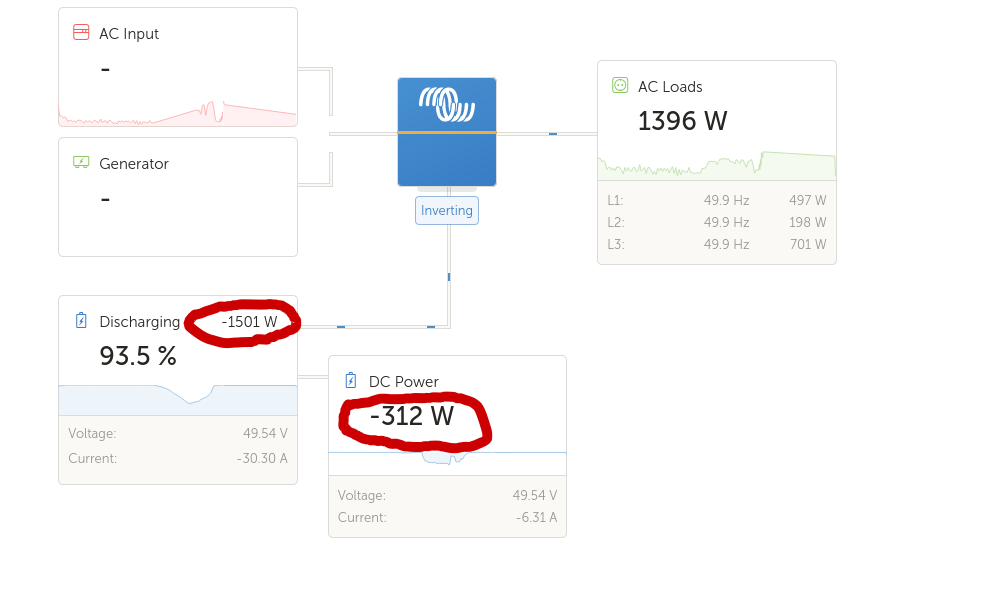
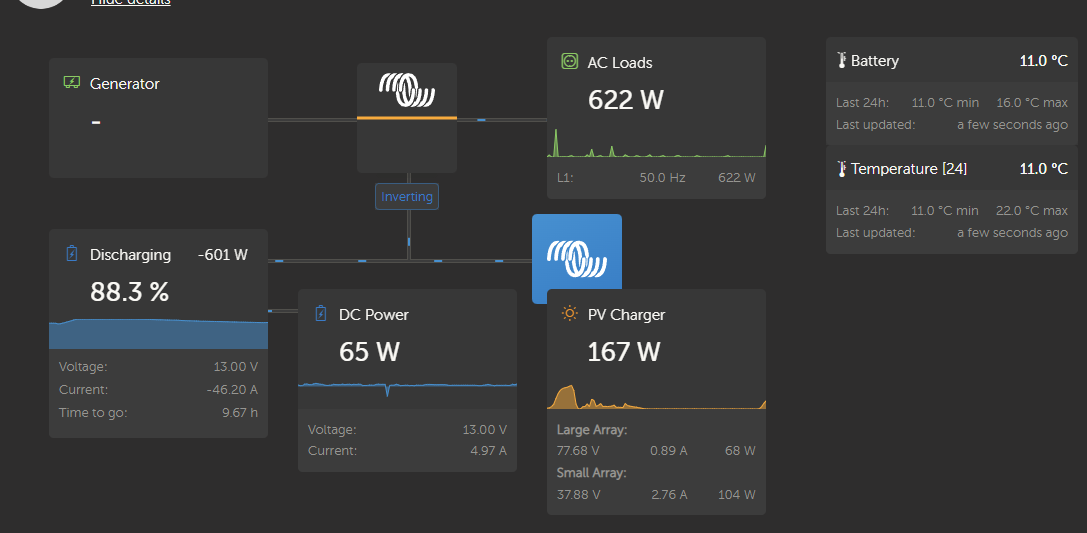
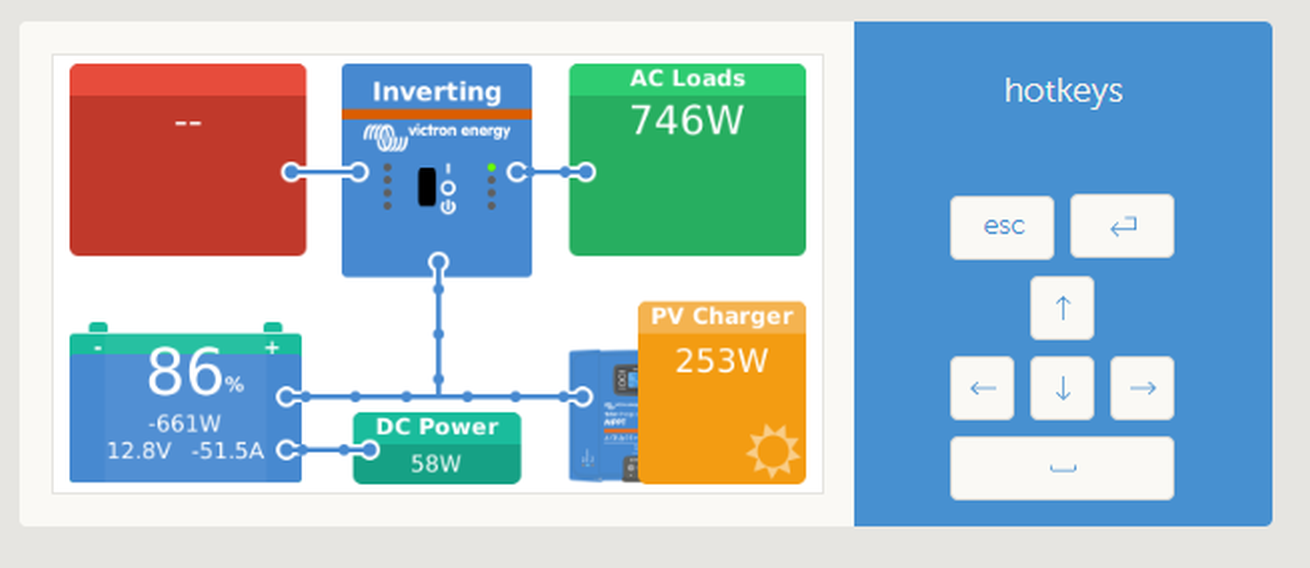
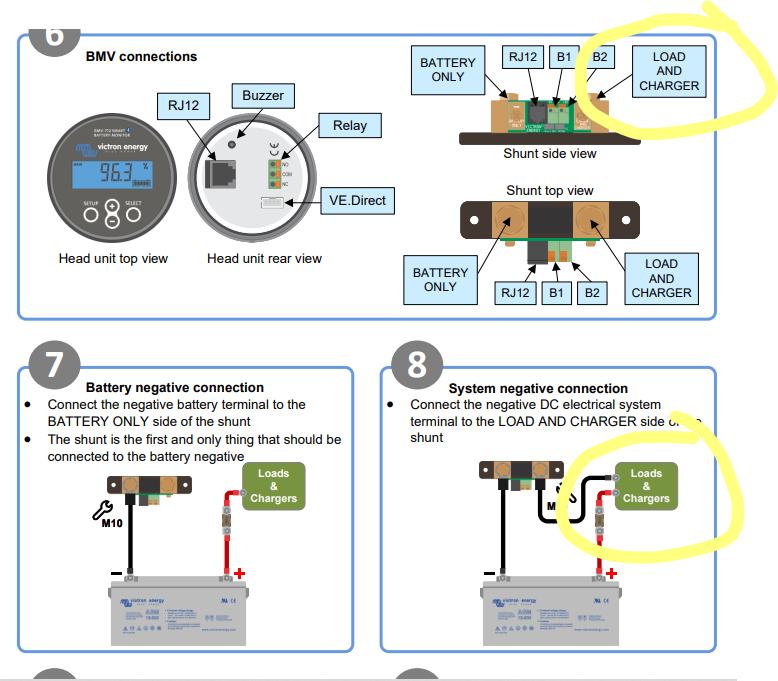

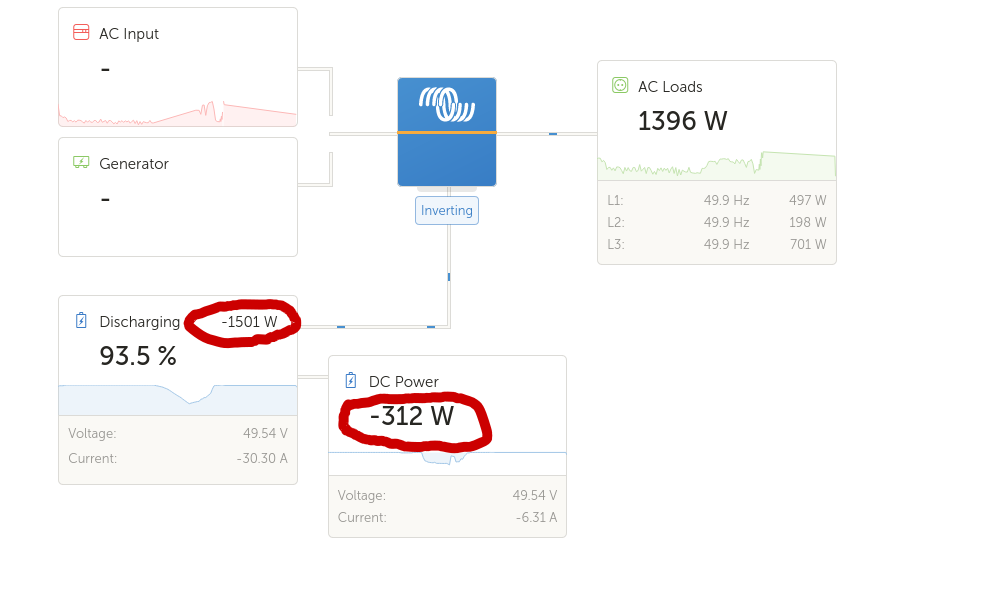 Unfortunately I don't have CAN managed batteries, they are very large but sourced in Africa. I may eventually replace the BMS but for the moment I just want to use the sum of VE.Bus and the energy meter to calculate total current flow in and out of the battery, which will give me a fairly accurate SOC. Do you know of any way to do that?
Unfortunately I don't have CAN managed batteries, they are very large but sourced in Africa. I may eventually replace the BMS but for the moment I just want to use the sum of VE.Bus and the energy meter to calculate total current flow in and out of the battery, which will give me a fairly accurate SOC. Do you know of any way to do that?